Kyoto in Autumn: The Best Spots for Foliage Season
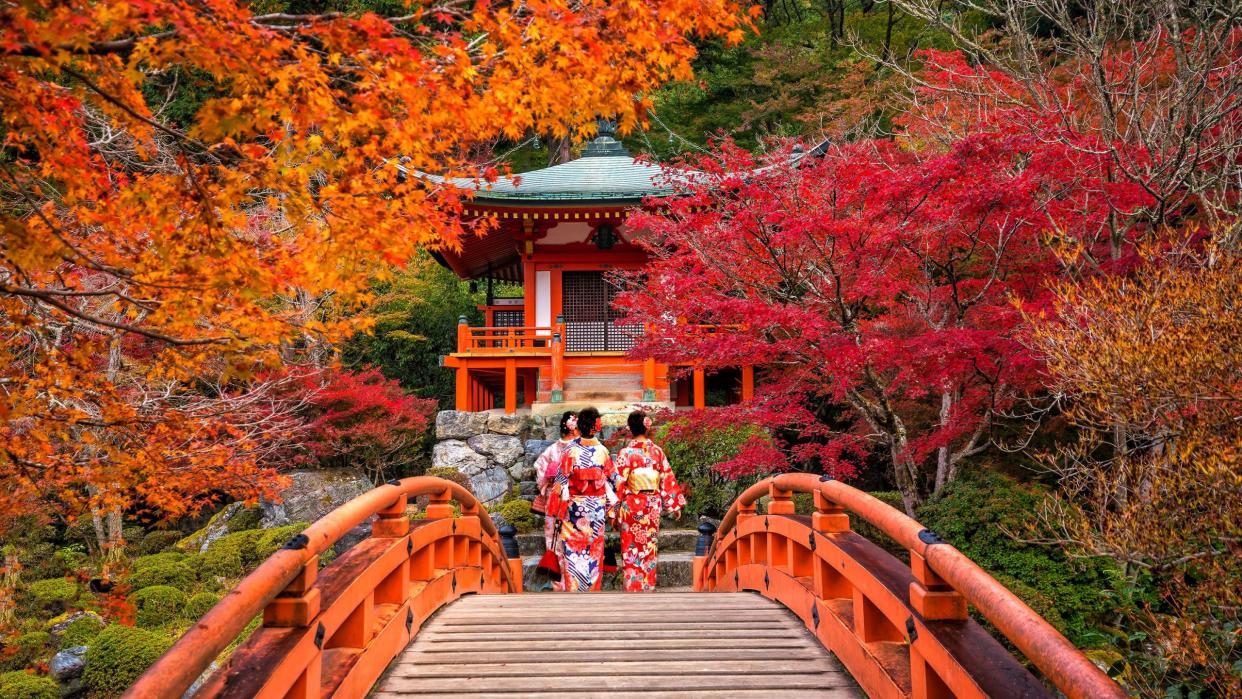
This post may contain affiliate links. If you use these links, we may earn a small commission. Thanks for your support.
There is something magical about Kyoto in autumn.
Almost every temple, shrine, and garden in the historic town are surrounded by beautiful Japanese maple and ginkgo trees as they shift from red to gold. It's one of the most famous cities in Japan to witness this spectacular display of leaves changing colors.
When is the autumn foliage season in Kyoto?
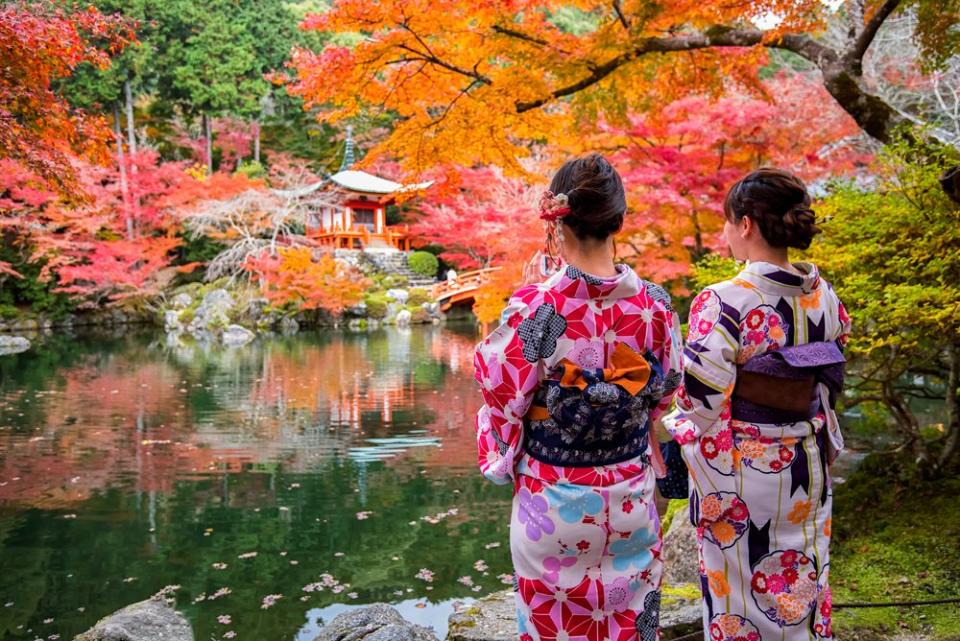
Timing your trip can be a bit tricky as the leaves in Kyoto start changing color sometime in October. Unfortunately, it's too difficult to give a specific date, but here are a few tips for the ultimate fall lover's trip:
The peak of Kyoto's fall foliage happens from mid-November to early December, typically the most popular time for tourists to visit.
The last leaves fall around the middle of December.
However, if you arrive in Kyoto just before the foliage season, you can plan a day trip further north. This is because the leaves start changing colors earlier there.
Otherwise, if you miss the peak of the season in the city, head further south to places such as Nara to catch the trees at their peak color.
The best places to visit in Kyoto City in autumn
Kiyomizu-dera Temple

This is an obvious place to start, as Kiyomizu-dera Temple is one of Kyoto's most popular tourist spots. The Buddhist temple is over 1,200 years old and part of the UNESCO World Heritage Site known as the Historic Monuments of Ancient Kyoto.
Be sure to check out the temple's main hall (also called Kiyomizu Stage) for beautiful views over the Kin-un-kyo Gorge.
From mid-November to early December, there is a special illumination event in the evening that runs until 9.30 pm (last entry at 9 pm). Despite the crowds, it is worth seeing the autumn foliage lit up at night.
Pro tip: If it's too crowded at Kiyomizu-dera Temple, then check out Kodaiji Temple, also known for its evening illuminations.
Tofukuji

Next up is Tofukuji. One of the foremost Zen temples in Kyoto and the primary temple of its own school within the Rinzai sect of Zen Buddhism.
With over 2,000 maple trees in the vicinity, there are multiple viewing points to choose from.
The most popular is the Tsutenkyo Bridge—it sits within a valley of maple trees.
Otherwise, head down onto the bridge, which is equally as beautiful. The Kyoto autumn leaves look like a sea of red clouds.
Pro tip: Photography may be prohibited on the Tsutenkyo Bridge, so visit Sengyokukan Gorge for spectacular images.
Nijo Castle

This castle is one of the few remaining from the golden ages of Japanese architecture and design—the early Edo period.
Since the grounds are enormous, you can stroll for hours as you take in views of the maple and ginkgo trees planted near the Ninomaru Goten, the main East Gate and the Southeast Watchtower.
The Philosopher's Path
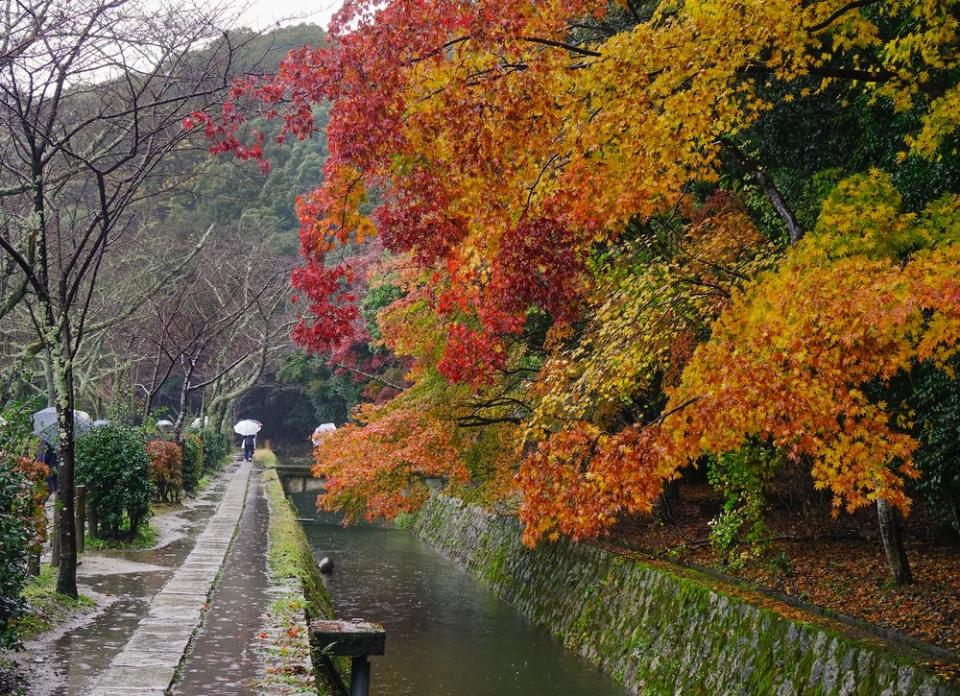
Kyoto in the fall is the perfect time to take a stroll.
Head to The Philosopher's Walk, a beautiful 2-kilometer (1.2 miles) walk next to a canal. Listen to the sound of flowing water as you admire the red leaves.
Eikando Zenrinji
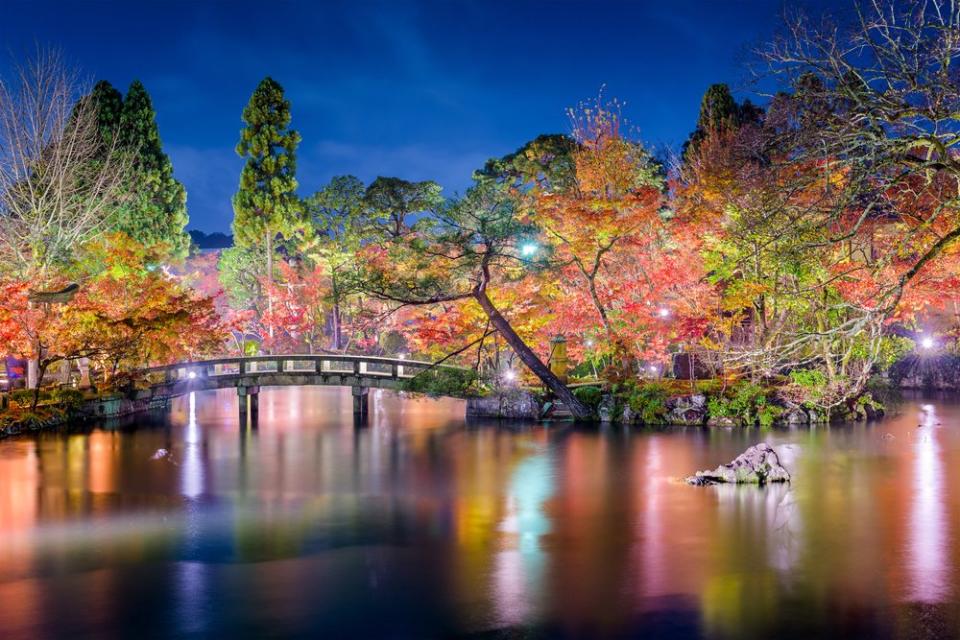
If you walk south along The Philosopher's Path, you will find Eikando Zenrinji, with over 3,000 Japanese maple trees. Walkways connect the multiple buildings and monuments, but the real highlight is the traditional Japanese garden with a pond.
The red color from the trees reflects in the water.
You don't want to miss the special light-up event held at night from mid to late November.
Pro tip: For a birds-eye view, climb to the top of the Tahoto Pagoda.
Bishamondo
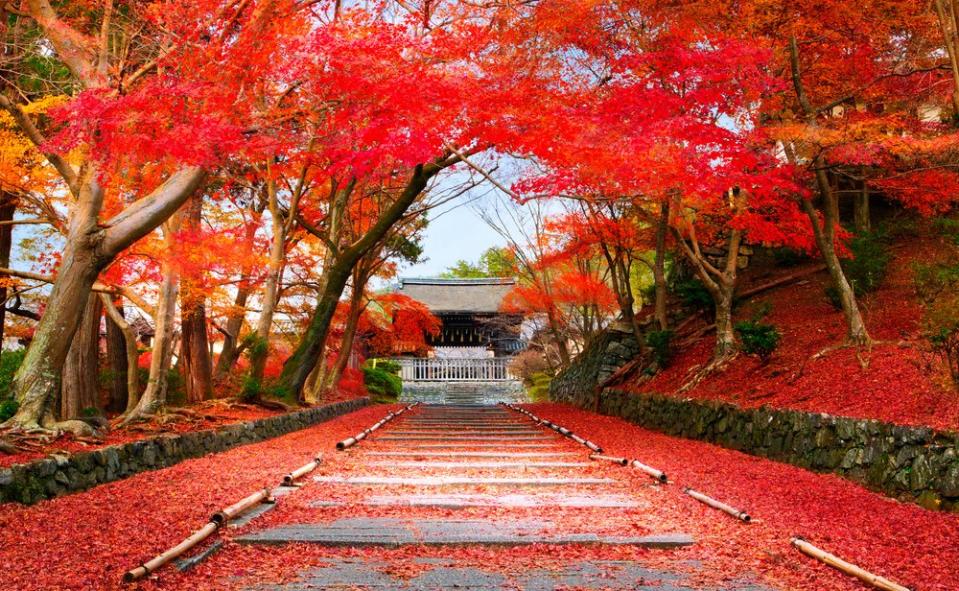
While in Japan, take advantage of visiting a temple dedicated to bringing good fortune.
The slight incline leading to the temple's main entrance becomes a red carpet covered in maple leaves. So, it's good fortune and incredible scenery in one.
Pro tip: Groundskeepers sweep away most of the leaves in the afternoon, so plan your visit for the morning.
Ryoanji Temple

For something unique, head to Ryoanji Temple, famous for its rock garden. The dry landscape is home to 15 large and small stones situated in white gravel. Do the stones resemble islands or waves? It's up to your imagination.
The Kyoto, Japan, fall season is the only time to spot the colorful red and yellow maple trees peeping over the rock garden wall.
Kyoto Botanical Gardens
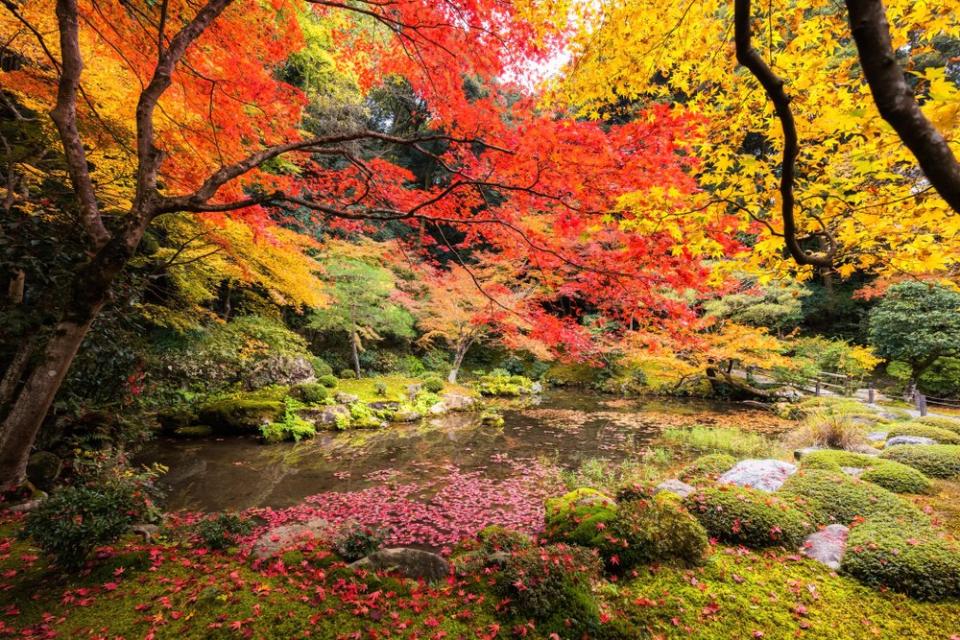
Are you interested in checking out Japan's oldest public botanical garden?
Then head to the city's northern half, home to a natural forest with Japanese maple, metasequoia, ginkgo, and Formosan gum.
The colors during autumn are spectacular, particularly at night when the garden is lit up.
Kitano Tenmangu Shrine
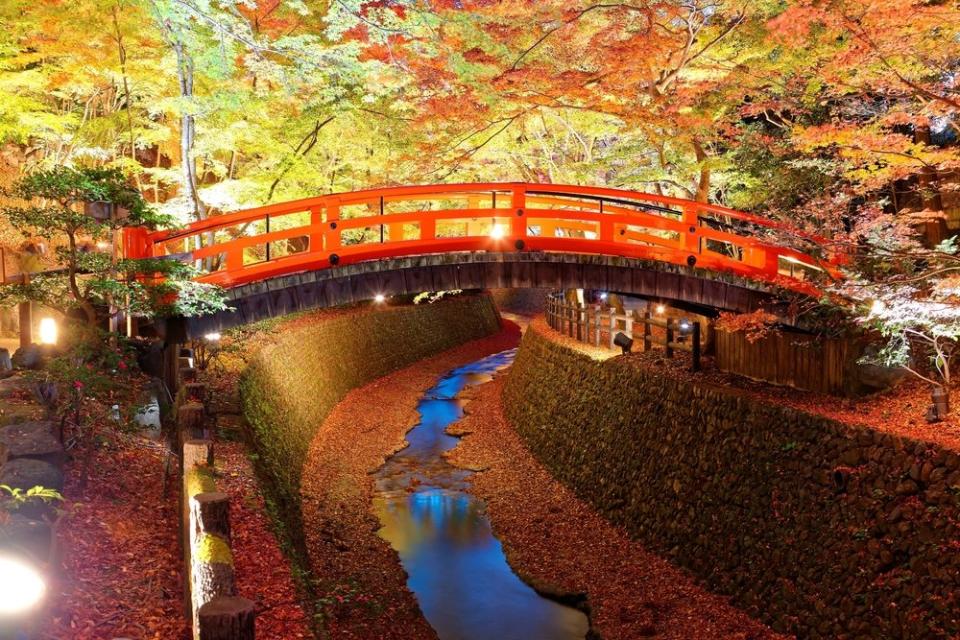
Want to know something unique about this shrine?
Students visit before entrance exams to buy a good luck charm and pray they get into their first school of choice.
From late October to late November, the foliage garden opens to visitors with hundreds of maple trees lining the river.
Head to the red bridge, which spans the river and is the most picturesque view during autumn.
Genko-an Temple

If you want a window with a view, then head to this small Zen Temple. It's the perfect Insta-shot.
From inside the temple, the Japanese maples are perfectly framed through round- and square-shaped windows.
Nanzen-ji Temple

Come to Nanzen-ji Temple, the headquarters of the Rinzai school of Zen Buddhism, for a one-stop shop.
From the Sanmon Gate, an important cultural gate, head up to the deck for views overlooking the forests and mountains. You will even see Kyoto City in the background.
Nanzenin Temple, one of the sub-temples, has a garden centered around a pond that is beautiful during the foliage season.
If visiting during the evening, head to Tenjuan Temple, which illuminates its two gardens, a rock garden and a pond.
Ginkaku-ji Temple

Yes, this spot does attract the crowds, but there's a good reason for that. The Silver Pavilion is known for its simplicity, allowing the abundance of red and orange foliage to shine during the autumn months.
Head to the observatory to fully appreciate the beauty of this temple.
Honen-in Temple
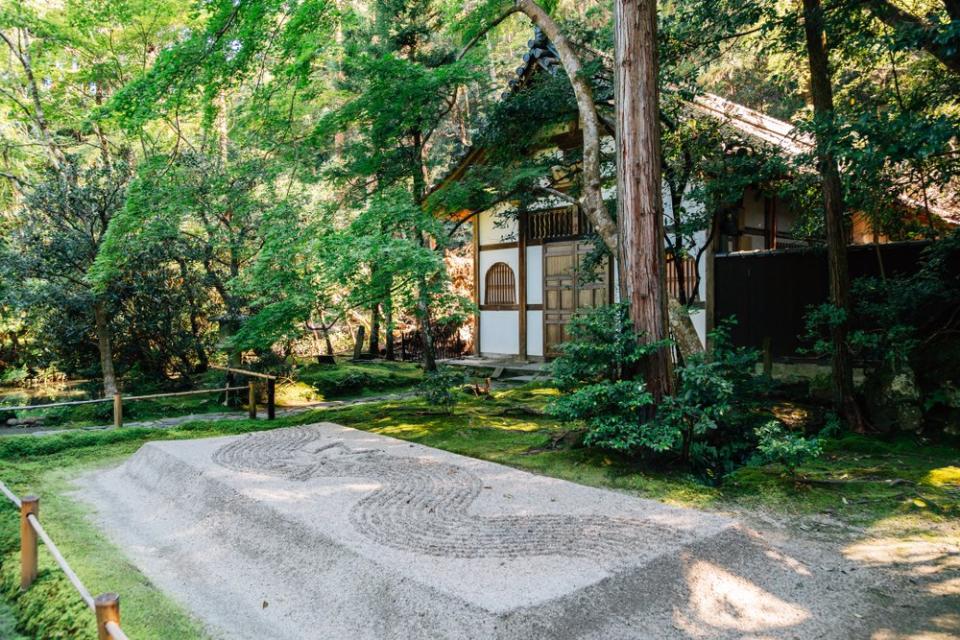
If you plan to visit the scenic Philosopher's Path, don't forget to check out Honen-in Temple.
Usually, at the entrance of temples and shrines, you will have a basin to wash your hands, but at Honen-in Temple, there are two small mounds of sand that you walk past. These are said to purify the visitor.
Every few days, a monk will draw a new pattern in the mounds; sometimes they look like waves other times, they resemble flowers.
You won't be disappointed by the number of maple trees on the grounds.
Pro tip: The actual buildings are only open to the public twice a year, one week in spring and one in autumn. So, find out the dates before you travel there.
Shinnyodo Temple

Want to check out a spot frequented by locals?
Not too far from the Philosophers Path and Ginkaku-ji Temple is Shinnyodo Temple.
With a three-story pagoda, there are dozens of Kyoto Momiji (maple leaves) to admire. This is a place you will want to remember your camera.
The Kyoto Gyoen (Imperial Palace Park)

While the crowds come in masses to The Kyoto Gyoen, the gardens stretch for 1.3 kilometers (0.8 miles) from north to south, so you will still be able to enjoy peace and quiet.
The main attraction during autumn is the thousands of ginkgo trees, but don't forget to wander around the large pond in the center of the garden.
Daitoku-ji
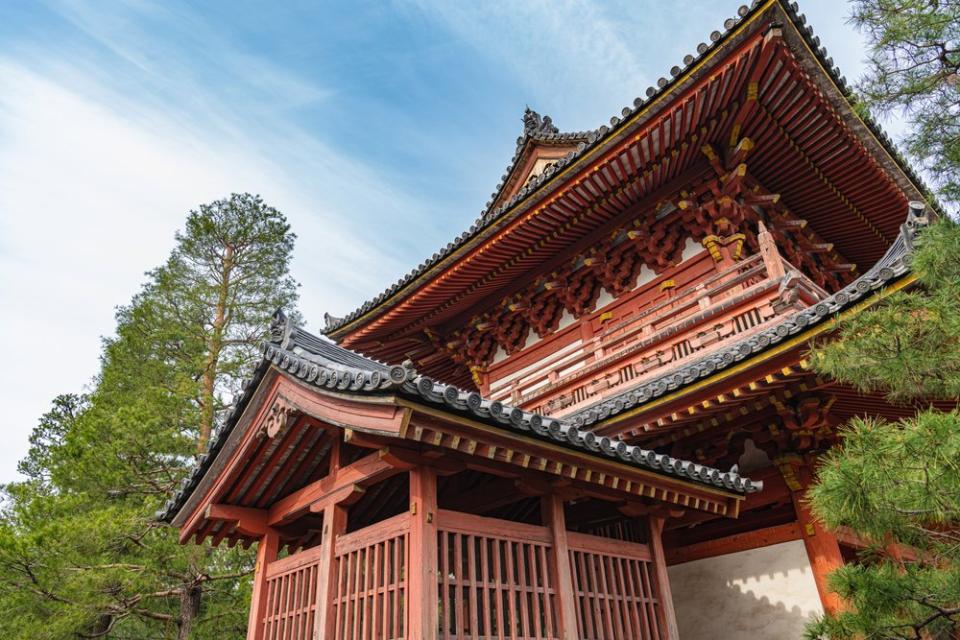
Within this walled temple complex, there are several beautiful Zen gardens as well as 22 sub-temples. Unfortunately, the public can only enter a few of them, so follow the signage.
When visiting during the foliage season, take a walk past Obai-in Temple inside the grounds.
Pro tip: More of the temples open during the maple leaf season.
Chionin
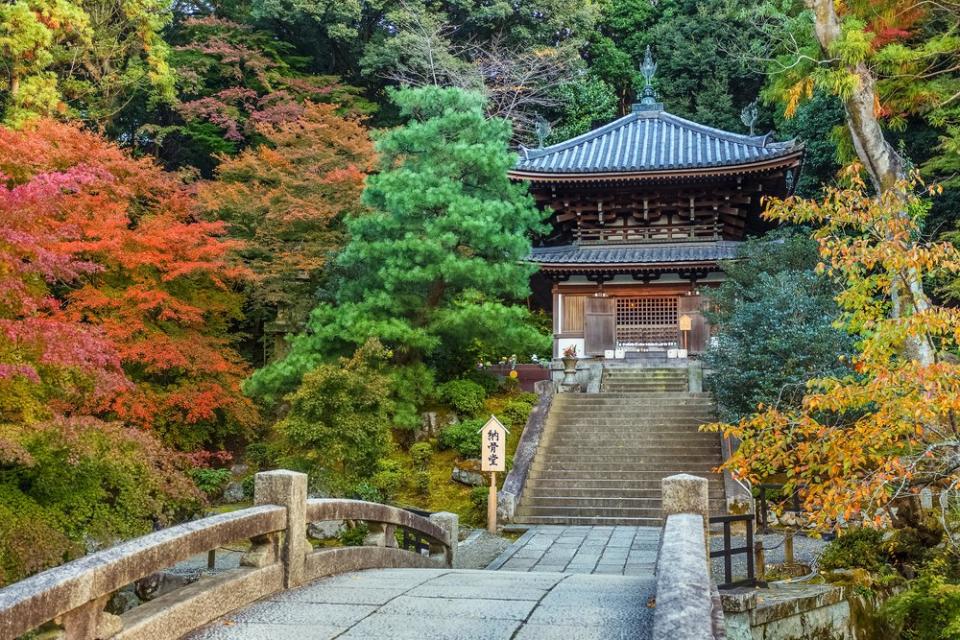
While Chionin is the head temple of the Jodo Buddhist sect in Japan, it's recommended to visit Yuzen-en Garden and Hojo Garden, which are amongst the temple grounds.
You can even enjoy an evening light show, where there will no doubt be a great atmosphere.
Incredible spots to visit outside of Kyoto City in autumn
Arashiyama

Arashiyama is a popular spot throughout the year. With many attractions, the benefit of visiting during autumn is the pops of yellow, green and red that cover the hillsides.
Togetsukyo Bridge is an iconic photo spot. Take a photo of the bridge with the forested mountain in the background. It looks like mosaic artwork.
Okochi-Sanso Villa is one of Kyoto's best gardens specifically designed to highlight all four seasons, from the cherry blossoms to the azaleas and, of course, the Japanese maple trees.
You must also stop by one of the temples in the area—Tenryuji, Jojakkoji, Nisonin or Gioji.
Pro-tip: The best views are seen from a boat called a Yakatabune or a rowboat, which you can rent.
Kifune Shrine
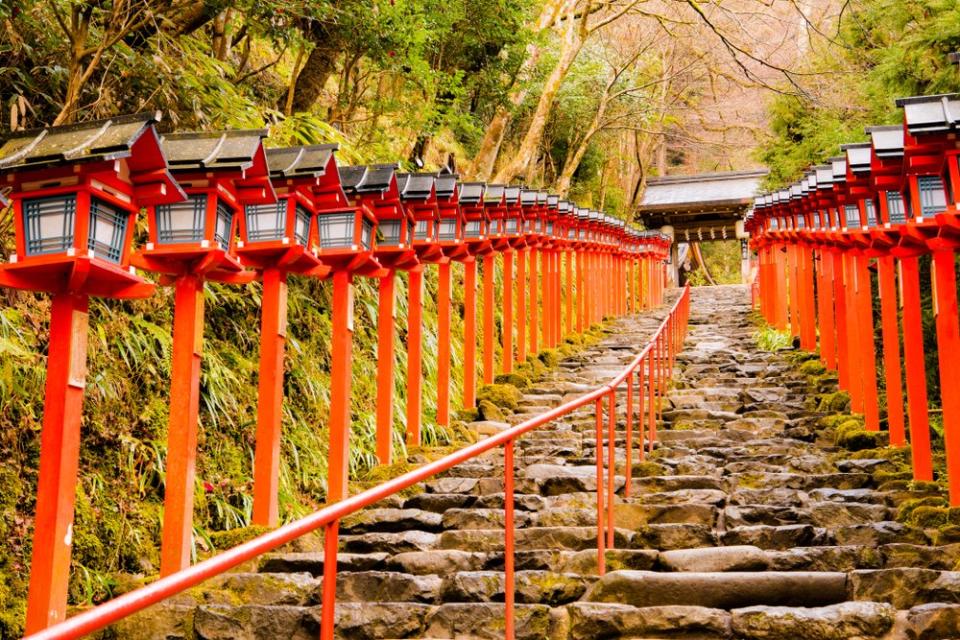
This area is an hour north of Kyoto by train or bus, but worth every minute of the ride. The site is beautiful.
To avoid disappointment, keep in mind that the autumn foliage season begins earlier (at the beginning of November).
The torii gates at the shrine entrance are lined with lanterns that highlight the colors of the trees.
If you come to the area, make sure you dine at Hirobun, a restaurant located over a river with fresh noodles served through a bamboo shoot.
Jojakko-ji Temple

This temple is a beautiful place to visit throughout the year.
However, as the leaves from 200 maple trees change color during autumn, there are hints of red, yellow, orange and green which reflect onto the footpath.
It's a sensory experience you won't forget.
Daikaku-ji Temple

Located 20 minutes from the station in Arashiyama, Daikaku-ji Temple is the place to come for those who like to avoid crowds.
Originally it was built as a detached palace for Emperor Saga, but thirty years after his death, it was turned into a temple.
During autumn, the garden grounds, which are connected by a network of paths, are illuminated during the evening.
Takao
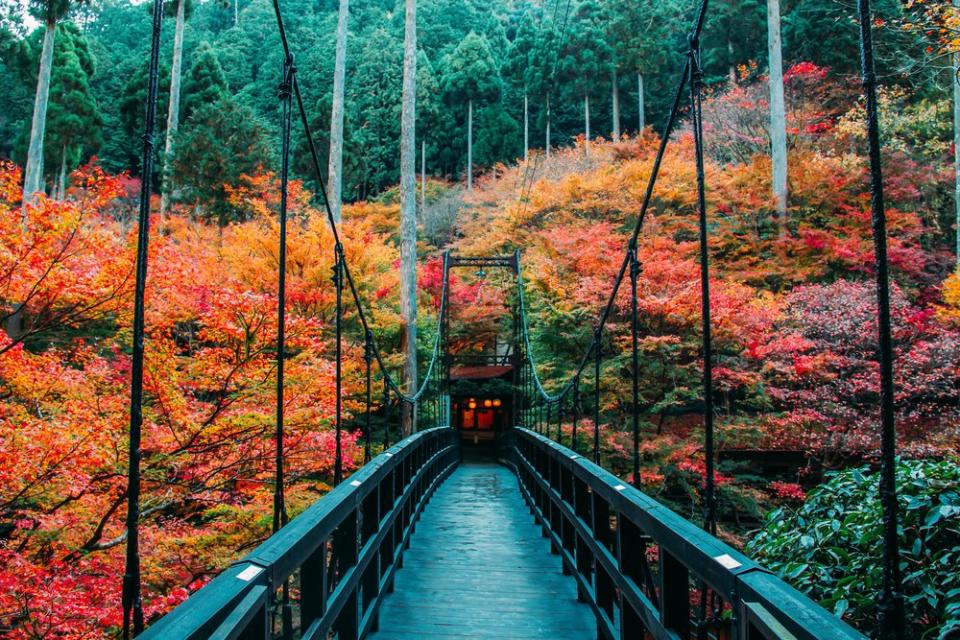
You know you've found a great spot to visit when they host an annual festival dedicated to autumn leaves. Come November, the Mount Takao Autumn Leaves Festival commences and runs for the month.
You'll find various performances of taiko drumming demonstrations, orchestral concerts, and festival dancing. As you watch, you can admire the stunning mountainsides festooned with maples.
Kurama-dera Temple
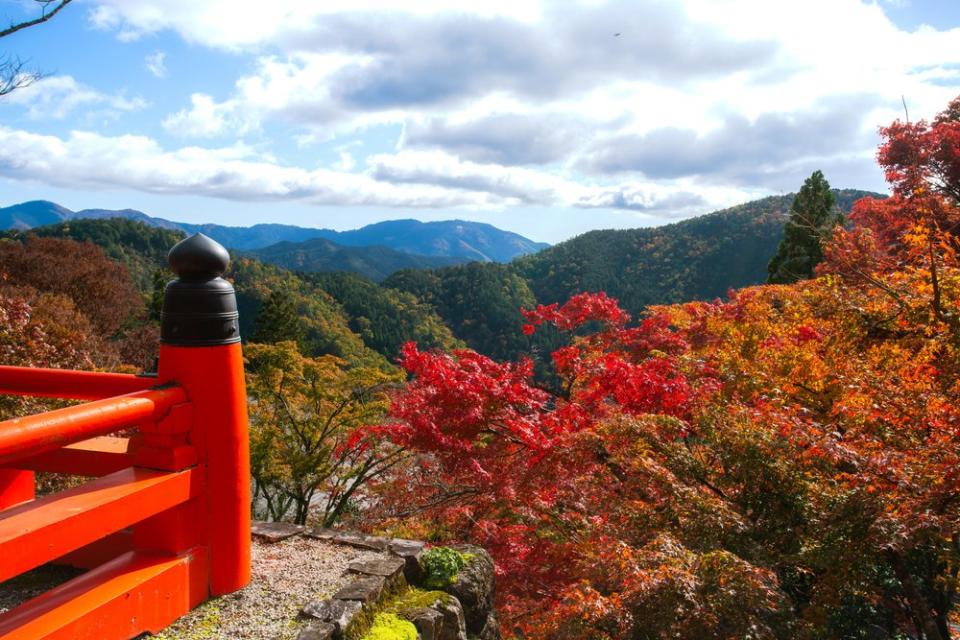
Located north of Kyoto, this Buddhist Temple is perched on Mount Kurama. You can take the funicular to reach the top, but why not make the ascent on foot? That way, you can see the red maple trees up close.
Sanzenin
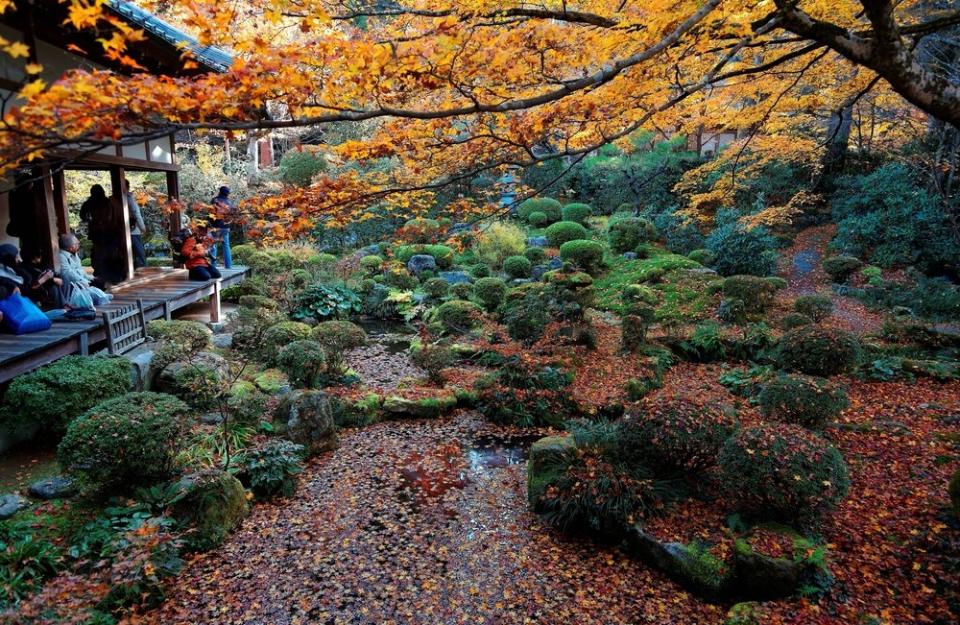
If you arrive in Kyoto before the foliage season starts, head north to Sanzenin.
Located in the rural farming village of Ohara, the temple grounds have a variety of gardens and walking paths to explore.
If you need a break, grab a cup of matcha (green tea) and a Japanese sweet from the guest hall called Kyakuden, it's inside the entrance.
Yoshimine-dera

Located in the mountains of Kyoto's southwest border is Yoshimine-dera. From mid to late November, the temple has incredible views of the city and beautiful autumn colors.
Shugakuin Imperial Villa

This Imperial Villa, which consists of the Upper, Middle and Lower Villa, all feature gardens and buildings of traditional imperial style.
You will need to make a reservation in advance to visit.
Pro tip: Since you're in the area, pay a visit to Enkoji, a small temple within walking distance.
Daigo-ji

Daigo-ji Temple is said to be one of the oldest wooden buildings in Kyoto and has a reputation for incredible autumn leaves.
The highlight of a visit here is the Bentendo Hall at the back of the Shimo Daigo Temple, surrounded by a pond and maple trees.
Hakuryuen Garden
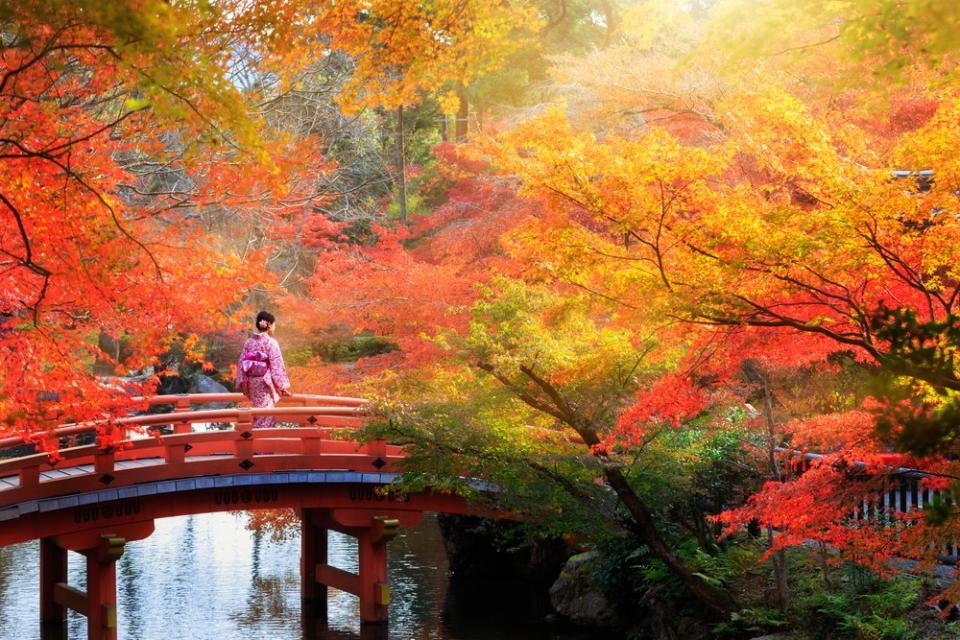
Looking for an exclusive experience? Hakuryuen Garden only allows 100 visitors a day, so be sure to get there early in the morning.
What makes this place unique is how the brilliantly colored moss garden contrasts with the autumn leaves.
Ruriko-in Temple

Come here to see the Garyu Garden, located inside the temple grounds. There are various perspectives to take in the garden, which is in a shape representing a dragon soaring to the heavens.
This spot is increasing in popularity yearly, so don't be surprised if you have to line up to get in.
Pro tip: If you are visiting in summer or winter, Ruriko-in Temple is closed to the public.
Weather in Kyoto in autumn
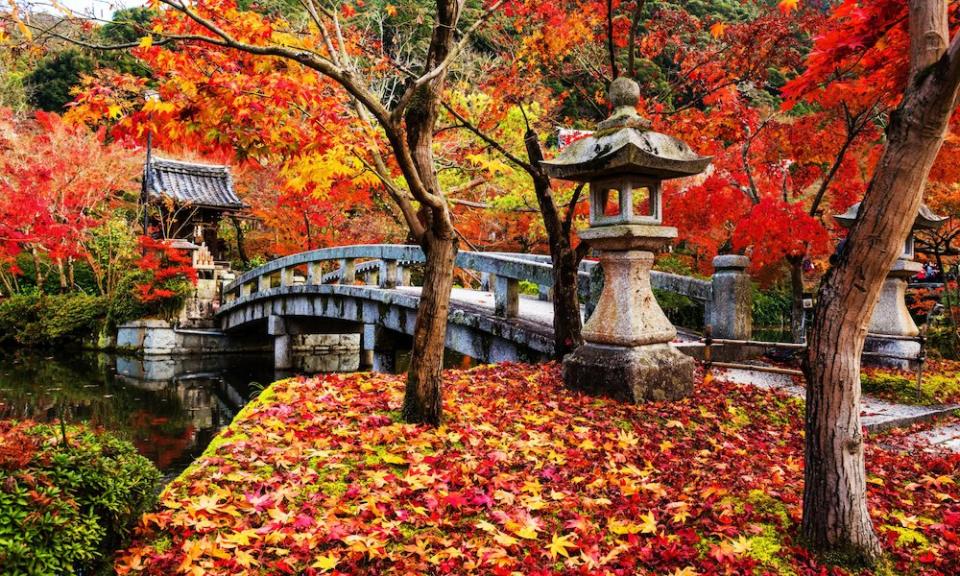
It's no surprise that tourists flock to Kyoto in autumn, particularly during November.
The most important thing to remember is the significant temperature difference between September and November.
The average temperature in late September is 22°C (72°F). But by October, the temperature drops to an average of 16.5°C (62°F), and there is a gentle breeze.
The foliage season really gets underway in Kyoto in November, and it becomes even chillier. Expect an average temperature of 12°C (54°F).
But don't let that deter you.
There is little rainfall, and the days are generally full of sunshine. The evenings, however, feel more like winter.
Packing list essentials for Kyoto

Packing for a trip to Kyoto during autumn can be difficult as the country transitions from autumn to winter.
Towards the end of November, you will need warmer layers as winter approaches.
Unfortunately, this means layering is essential, so add a jacket or jumper if you plan a full day of adventuring.
Below are a few essential items:
Comfortable shoes – whether you are walking The Philosopher's Path or making the ascent to Kurama-Dera Temple, you won't regret packing a pair of shoes you know are comfortable for long days exploring.
A wool or down coat – maybe you won't need it during the day, but maybe you will. It's best to bring one as the temperature can drop suddenly, especially when you are out of the sun.
Gloves and a hat/beanie – these are small items that don't take up much room and are a perfect accessory when heading out to dinner. Even during the day, you can put a beanie in your pocket just in case.
A backpack – if you are planning to visit multiple spots in a day, you will want to be able to carry your additional jumper or a water bottle in a bag. A backpack is a comfortable option!
Download Google Translate – while this isn't a packing essential, not everyone in Japan speaks English, so it's best to come prepared. It will make ordering at a restaurant a lot easier.
How to get to Kyoto
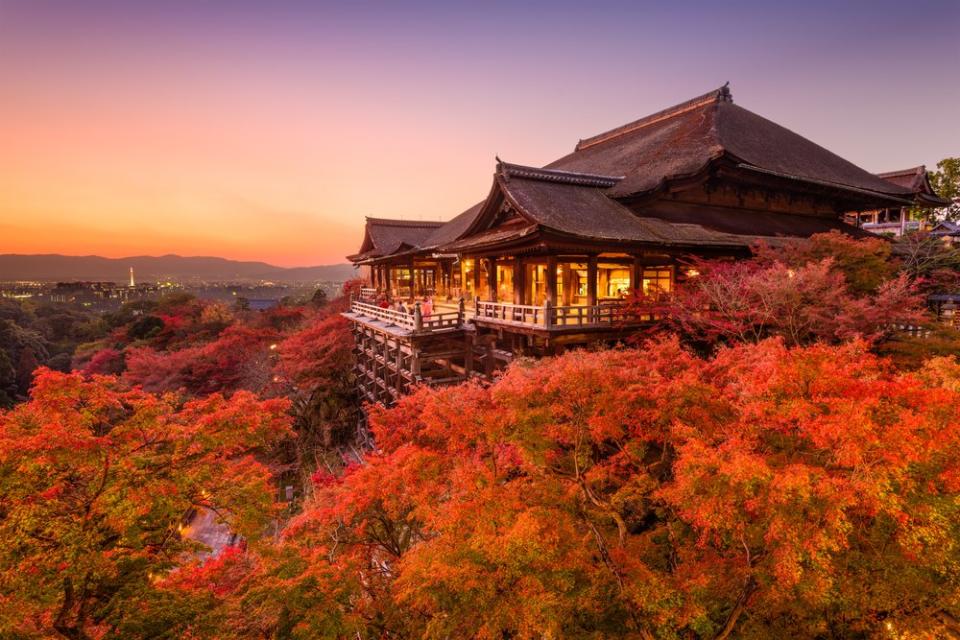
If you haven't visited Japan before, let us tell you one important thing about getting from A to B.
The train system is efficient, runs regularly, and is convenient. But getting the hang of it is a bit daunting. It can be challenging to navigate as there are various lines, so our best tip is to use Google Maps.
If arriving internationally at one of the two main international airports in Tokyo, Narita or Haneda, the most efficient option is getting to Tokyo Station.
From Tokyo Station to Kyoto, you can catch the Shinkansen JR Central. The journey will take just over 2 hours.
Another major city close to Kyoto is Osaka. Again, the easiest way to travel is by train. From Osaka to Kyoto, it will only take you 14 minutes on the Shinkansen JR Central.
FAQ
What is autumn like in Kyoto?
Autumn is a beautiful time to visit, but the temperatures change quite dramatically between September and November, and it's the peak season for leaf peeping. So it's bustling.
When should I visit Kyoto in the fall?
The main attraction is the foliage season, with the peak of the leaves falling between mid-November to early December.
Where should I go in autumn in Japan?
With a large selection of temples, shrines and gardens, Kyoto is a beautiful place to visit during autumn. In addition, it's only a 2-hour and 15-minute fast train from Tokyo, so the two cities combined make an excellent itinerary.
The post Kyoto in Autumn: The Best Spots for Foliage Season appeared first on Bookaway.

